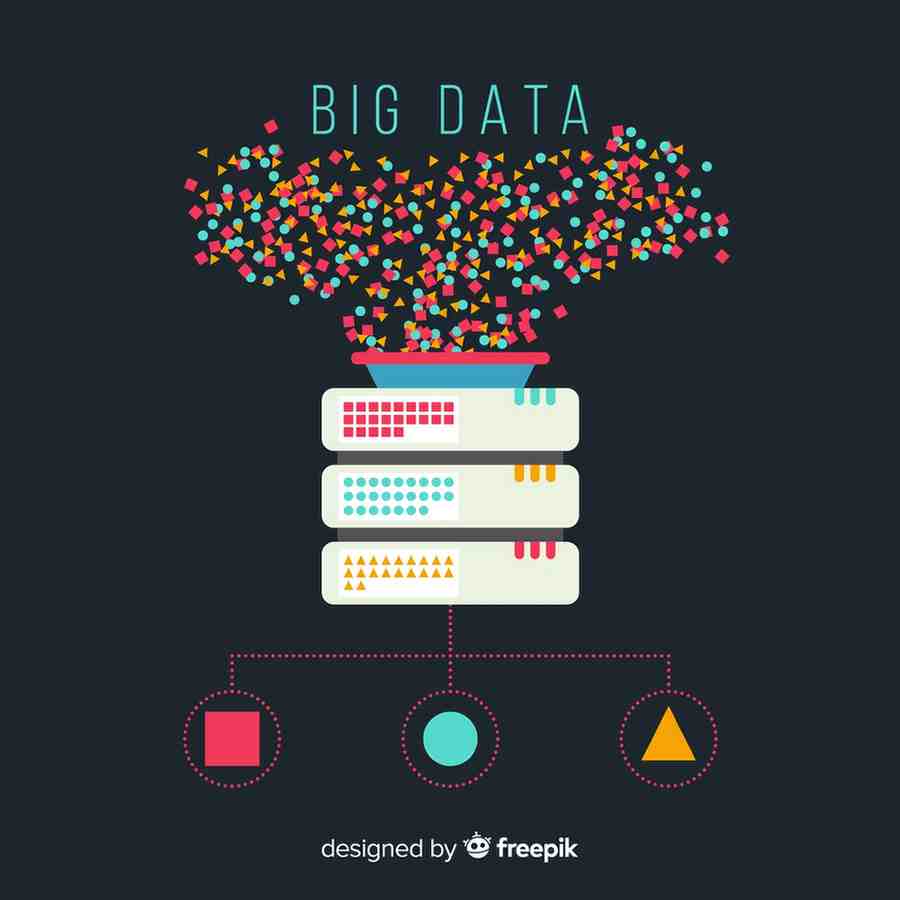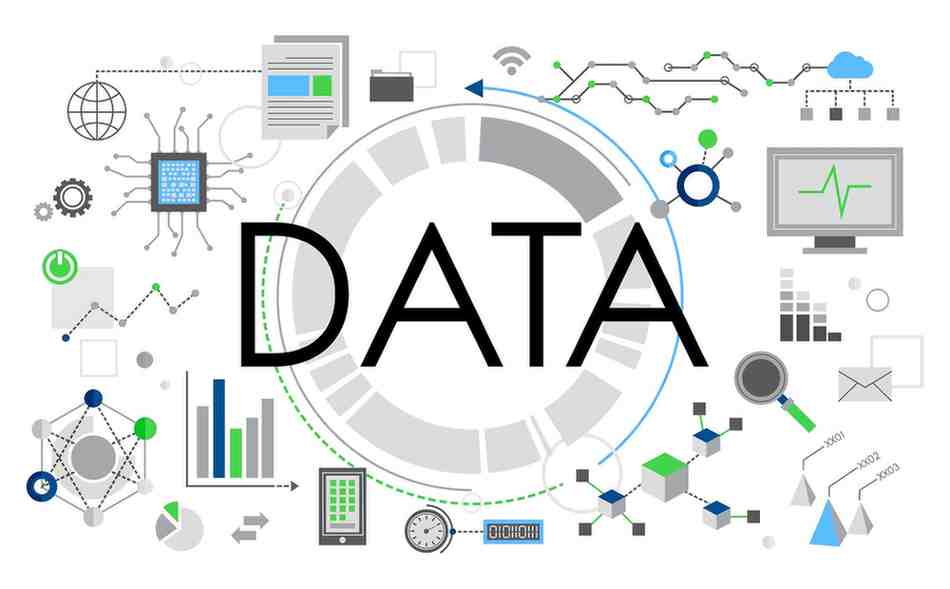Data structure in R — Complete 2025 Guide for AI & Big-data Workflows
Meta description: Practical 2025 guide to data structure in R — vectors to Arrow, performance tips, AI embedding workflows, code examples, and a decision checklist.
TL;DR — data structure in R
Pick the right data structure in R by matching data size and workflow: for small to medium datasets use tibble/data.frame; for medium-to-large and speed-sensitive tasks, use data.table; for datasets larger than memory or cross-language workflows use Apache Arrow, Parquet, or DuckDB. For AI use cases (embeddings, vector search, GPU models), store dense vectors in Arrow/Parquet and use vector DBs for production; use torch for tensor/GPU compute. Download the one-page decision checklist below for copy/paste rules and quick code snippets.
Why data structure in R still matters in 2025
R remains central to statistics and data science. In 2025, typical pipelines blend statistical modeling, big-data processing, and AI systems. That fusion makes the choice of data structure in R critical not only for performance but for interoperability, reproducibility, and ease of deploying AI workloads.
Key trends driving this importance
- Zero-copy interoperability: Apache Arrow enables efficient memory sharing across R, Python, and Rust without expensive serialization.
- AI embedding workflows: managing high-dimensional vectors at scale is a common production need (similarity search, retrieval).
- Hybrid toolchains: DuckDB, Polars, data.table and Arrow each solve different problems — knowing when to use which saves hours of rework.
This guide converts those trends into practical recommendations, runnable examples, and a decision checklist so you can choose the right data structure in R for your use case.
Core data structure in R — the basics
Foundational R types every practitioner must know. Short definitions, when to use, and code snippets.
Vector — atomic & list vectors
Homogeneous sequences (numeric, character, logical). Best for single columns or feature vectors.
scores <- c(95, 88, 76, 90)
names <- c("Aisha", "Bilal", "Carlos")List — nested structures & list columns
Heterogeneous containers; perfect for storing models, nested results, or list-columns in tibbles.
model_list <- list(
lm_fit = lm(mpg ~ wt, data = mtcars),
meta = list(created = Sys.Date())
)Matrix & Array — homogeneous 2D/ND containers
Use for linear algebra, images, or numeric tensors.
mat <- matrix(1:6, nrow = 2)
mat %*% t(mat)Factor — categorical storage
Encodes categories and supports ordered factors; exercise care with factor levels when merging datasets.
gender <- factor(c("M", "F", "F", "M"), levels = c("F", "M"))Data frame vs Tibble
data.frame is base R; tibble is the tidyverse alternative with friendlier printing and safer subsetting.
library(tibble)
df1 <- data.frame(id = 1:3, score = c(90,85,88))
tb <- tibble(id = 1:3, score = c(90,85,88))Visual comparison table — Basics
| Structure | Homogeneous? | Typical package | Best for |
|---|---|---|---|
| Vector | Yes | base | Single columns / features |
| List | No | base | Nested objects, models |
| Matrix | Yes | base | Linear algebra |
| Array | Yes | base | Multi-dimensional numeric data |
| Factor | No (categorical) | base | Categorical predictors |
| Data frame | No | base | Tabular data |
| Tibble | No | tidyverse | Tidy workflows & list-columns |
Advanced data structure in R types and when to use them
Mid → advanced structures for package authors, domain experts, and performance.
Tibbles & list-columns
Store nested data per row and use tidyr::unnest() or purrr to manipulate. Great for tidy data pipelines.
S3 / S4 / R6 custom objects
S3: lightweight dispatch; S4: formal classes with validation; R6: mutable objects for stateful patterns. Choose based on API needs and package goals.
vctrs and custom vector classes
vctrs provides consistent coercion and robust type behavior — important for package authors and for ensuring tidyverse compatibility.
Sparse matrices (Matrix package)
Use dgCMatrix for high-dimensional sparse datasets (text, graphs). Saves memory and accelerates many ML algorithms.
Specialized types
Time series: ts, xts, zoo
Spatial: sf
Use domain classes when the ecosystem offers analysis/visualization tools optimized for that type.
Performance, memory & profiling for data structure in R
Actionable tips to reduce memory usage and speed up pipelines.
How R stores objects (ALTREP)
ALTREP delays full materialization of objects until needed. Some operations cause materialization and unexpected memory spikes — benchmark large pipelines.
Measuring memory and profiling
Useful tools:
pryr::object_size()— object sizebench— microbenchmarkingprofmem— memory profiling
library(pryr)
object_size(mtcars)Serialization formats: rds, qs, fst, parquet
Choose appropriate format based on speed and cross-language needs.
| Format | Read/Write speed | Best for | Cross-language |
|---|---|---|---|
| rds | moderate | R-only snapshots | No |
| qs | very fast | Fast R serialization | No |
| fst | very fast | Fast columnar reads in R | Limited |
| Parquet | fast, columnar | Big data, cross-language | Yes (Arrow) |
In-place modification vs copy-on-write
data.table uses in-place updates (:=) to avoid copies. dplyr operations often copy; for memory-constrained pipelines, prefer data.table patterns.
# data.table in-place example
library(data.table)
DT <- data.table(x = 1:1e6, y = rnorm(1e6))
DT[, z := x * 2] # in-place, memory efficientBig-data data structure in R: Arrow, Parquet & Datasets
Core big-data patterns every modern R pipeline should know.
What is Apache Arrow?
Arrow is an in-memory columnar specification enabling zero-copy sharing across languages and very fast IO with Arrow-backed datasets.
Parquet vs Feather vs rds
- Parquet: columnar, compressed, schema evolution — best for large, multi-file datasets.
- Feather: Arrow IPC friendly for quick language hops.
- rds: R-native snapshot.
Arrow Datasets + dplyr backend
library(arrow)
ds <- open_dataset("path/to/parquet_folder")
library(dplyr)
ds %>% filter(country == "PK") %>% summarize(avg = mean(value))DuckDB / Polars from R
DuckDB: in-process SQL analytics over Parquet.
Polars: Rust DataFrame engine (bindings available). Use them for fast, scalable queries.

Recipe to visualize a 1B row dataset
- Store data partitioned by date as Parquet.
- Use DuckDB or Arrow Datasets to run aggregations and sample.
- Pull small summaries to R for plotting.
High-performance APIs: data.table, dtplyr, vroom
Fast IO and transformations for production workloads.
data.table
Ideal for large joins, group operations, and in-place updates; uses keys for fast merges.
dtplyr
Lets you write dplyr pipelines that compile into data.table operations — friendly syntax + speed.
vroom
Fast CSV reader for exploratory work. For production, prefer Parquet with Arrow.
IO decision: one-off fast CSV reads → vroom; stable production ingestion → partitioned Parquet + Arrow.
R object systems & custom types (S3/S4/R6/vctrs)
Choose the right object system early.
| Need | Recommended |
|---|---|
| Simple method dispatch | S3 |
| Formal validation | S4 |
| Mutable state / OOP style | R6 |
| Custom vector semantics | vctrs |
Use vctrs if you want robust vector semantics and tidyverse compatibility.
R + AI: embeddings, vector stores, tensors & GPU
Future-proof patterns connecting R to AI systems.
What is an embedding & how to store it in R
Embeddings are dense numeric vectors (e.g., 256–4096 dims). Storage options:
- Dense local matrix for offline work
- Parquet/Arrow for cross-language storage
- Vector DB for production similarity search
Example: store embeddings to Parquet
library(arrow)
# emb_matrix: n x d numeric matrix
emb_list <- apply(emb_matrix, 1, function(x) I(list(x)))
emb_df <- data.frame(id = seq_len(nrow(emb_matrix)), embedding = I(emb_list))
write_parquet(emb_df, "embeddings.parquet")Vector DB patterns
Compute embeddings in R or via API → keep Parquet copies for offline experiments → push vectors to Milvus / Pinecone for production KNN lookup.
Tensors & GPU with torch for R
torch allows tensors and GPU operations from R for deep learning tasks.
library(torch)
t <- torch_tensor(matrix(rnorm(24), ncol = 3))
# move to GPU if available
if (cuda_is_available()) t <- t$to(device = "cuda")Interoperability: Rcpp, Python, Arrow IPC, Parquet
Large systems are multi-language. Use Arrow IPC and Parquet to move data efficiently. Use Rcpp when you need custom C++ data structures for extreme performance or memory control.
When to build a C++ structure with Rcpp (speed & memory control)
Use Rcpp when you need extreme performance (tight loops) or fine memory control.
// [[Rcpp::export]]
NumericVector cpp_double(NumericVector x) {
int n = x.size();
NumericVector out(n);
for (int i = 0; i < n; ++i) out[i] = x[i] * 2.0;
return out;
}Rcpp::sourceCpp("cpp_double.cpp")
cpp_double(c(1,2,3))Arrow IPC & seamless data transfer to Python/Julia
Use Arrow IPC (Feather v2 / Arrow streaming) to share datasets between R and Python without serializing — zero-copy where possible. This enables R to be a component in multi-language AI pipelines.
library(arrow)
df <- read_parquet("shared_data.parquet")Production patterns: streaming, reproducible datasets, data versioning
Practical patterns for production systems.
Streaming: ingest with message queues and write partitioned Parquet for downstream analytics
Ingest new batches → write partitioned Parquet. Use Arrow Datasets to query partitions without reading all files.
Reproducibility: keep raw snapshots and include metadata (schema, provenance)
Store schema and transformation metadata alongside dataset snapshots for audits and reproducibility.

Versioning: use DVC or lakehouse tooling to track dataset versions and enable rollbacks
Keep immutable Parquet snapshots for each release and use DVC/lakehouse tooling for version control and provenance.
Practical cheat-sheets, decision checklist, and code snippets
One-line decision checklist
- < 10k rows: tibble / data.frame
- 10k–10M rows: data.table or dtplyr depending on team familiarity
- > memory or cross-language: Arrow/Parquet + DuckDB
- Embeddings / similarity search: Parquet → vector DB (Milvus/Pinecone)
- GPU / deep learning: torch tensors
Useful commands
# measure size
pryr::object_size(obj)
# write Parquet
arrow::write_parquet(df, "path/to/data.parquet")
# fast CSV read
vroom::vroom("big.csv")
# data.table in-place
DT[, new := sum(x), by = grp]
# convert to torch tensor
library(torch)
tensor <- torch_tensor(as.matrix(df_numeric))(Offer this as a downloadable PNG/PDF on your blog for engagement.)
Example projects
Project 1 — ETL pipeline with Arrow + DuckDB for 100M rows
Ingest raw files → write partitioned Parquet → run DuckDB aggregations → export summarized tables to R for visualization.
Project 2 — embedding store creation & retrieval with R → Pinecone
Compute embeddings in batches → write Parquet backup → upsert vectors into Pinecone → implement retrieval + reranking pipeline.
Project 3 — fast joins & grouped aggregations with data.table
Demonstrate keyed joins, grouped summaries, and in-place updates on simulated 50M row dataset. Include benchmark scripts and memory instrumentation.
Each project should include: README, scripts/ (ingest/transform), benchmarks/, and notebooks/ (analysis).
High-performance processing: data structure in R with data.table and dtplyr
Why data.table matters for large joins, group-by & in-place changes
data.table is a purpose-built engine for fast, memory-efficient tabular operations in R. For large joins, aggregated group-by operations, and repeated in-place updates, data.table often outperforms alternatives because it:
- Uses optimized C-level operations and efficient memory layout.
- Supports keyed joins (
setkey) for fast merge patterns. - Performs in-place modification with
:=which avoids copies and reduces peak memory usage.
When you care: heavy ETL, million+ row grouping, chained joins, or pipelines that must run on modest memory machines.
Quick example — keyed join + in-place update
library(data.table)
# sample tables
DT1 <- data.table(id = 1:1e6, val = rnorm(1e6))
DT2 <- data.table(id = sample(1:1e6, 5e5), tag = sample(letters, 5e5, TRUE))
# set key for fast join
setkey(DT1, id)
setkey(DT2, id)
# join and in-place add column (memory efficient)
DT1[DT2, tag := i.tag]dtplyr — use dplyr syntax but data.table speed (when and how)
dtplyr compiles dplyr verbs to data.table code under the hood. Use dtplyr when you want dplyr-style readable code but need data.table performance, or to standardize pipelines across team members with different syntactic preferences.
Example pipeline
library(dtplyr)
library(dplyr)
lazy_dt(DT1) %>%
group_by(tag) %>%
summarize(mean_val = mean(val, na.rm = TRUE)) %>%
as.data.table()Practical examples: common data-wrangling tasks and the fastest approach
| Task | Fastest approach (general) | Why |
|---|---|---|
| Grouped aggregation | data.table DT[, .(sum = sum(x)), by = group] | Minimal overhead, optimized grouping |
| Wide-to-long reshaping | data.table::melt or tidyr::pivot_longer | melt is C-optimized |
| Large joins | setkey() + DT1[DT2] | Uses binary search / index-based joins |
| Window functions | data.table by with .SD or frank | In-place, low-overhead |
Speed tips
- Avoid unnecessary copies — use
:=in data.table. - Use keys for repeated joins.
- Keep intermediate objects local and remove with
rm()+gc()when processing huge data. - Prefer columnar formats (Parquet/Arrow) to reduce IO load.
When not to use data.table (modeling stage vs manipulation stage)
Model training & readability: when you’re in exploratory/modeling phases where readability and reproducibility are priorities, dplyr/tibble pipelines may be preferable.
Complex object columns: if your table has many list-columns and nested objects, tidyverse tools (tibble + purrr) can be easier.
Small data / prototyping: for tiny datasets, performance difference is negligible; readability wins.
FAQ (12 questions)
Q1 — What is the best data structure in R for large datasets?
A: For large datasets, favor columnar formats (Parquet) and tools that query data on disk (DuckDB, Arrow Datasets). Use data.table if the dataset fits memory and you need extreme speed for joins and aggregations.
Q2 — Data frame or tibble — which should I use?
A: Use tibble for cleaner printing, safer subsetting, and tidyverse integration. Use data.frame if you need base R compatibility. Both are tabular; choice depends on ecosystem and tooling.
Q3 — When should I use data.table vs dplyr?
A: Use data.table for memory-efficient, high-speed operations (joins/group-bys) on large data. Use dplyr for readability and team familiarity. dtplyr combines dplyr syntax with data.table speed.
Q4 — How do I store embeddings in R?
A: Store experimental copies in Parquet/Arrow for reproducibility, and push vectors to a vector DB (Milvus, Pinecone) for production KNN. For small experiments, keep embeddings in dense matrices.
Q5 — How to work with Parquet files in R?
A: Use the Arrow package: read_parquet()/write_parquet() or open_dataset() for multi-file datasets. Combine with DuckDB for SQL-style queries without materializing full tables.
Q6 — What are sparse matrices and when to use them?
A: Sparse matrices (Matrix package, dgCMatrix) store only non-zero entries and are essential for high-dimensional sparse features (text, graphs) to reduce memory and speed up ML algorithms.
Q7 — How do I profile memory and optimize R objects?
A: Use pryr::object_size() to inspect sizes, bench for speed tests, and profmem for memory allocation profiling. Avoid unnecessary copies and prefer in-place updates where safe.
Q8 — Should I use Rcpp to optimize pipelines?
A: Use Rcpp for CPU-bound, tight loops, or to implement specialized data structures. For many data tasks, optimized R packages (data.table, Arrow) suffice without C++.
Q9 — How to choose between Arrow, DuckDB, and Polars?
A: Arrow = columnar in-memory format for cross-language workflows; DuckDB = in-process SQL analytics (great for Parquet); Polars = Rust-based DataFrame engine (high perf). Choose by query model and integration needs.
Q10 — When to use torch tensors vs base R matrices?
A: Use torch for deep learning and GPU-accelerated compute. For classic stats or small linear algebra, base matrices are simpler and have less setup overhead.
Q11 — Can I stream events directly into Parquet partitions?
A: Yes — emit micro-batches and write partitioned Parquet files. Use a streaming system (Kafka/Spark/Fluent) to buffer events and flush partitioned files for downstream analytics.
Q12 — What is vctrs and why should package authors care?
A: vctrs defines a consistent type/coercion system for custom vectors. Use it when building package-level vector types to ensure tidyverse compatibility and predictable behavior.
References & further reading
- Apache Arrow — official docs (Arrow & Parquet best practices)
- data.table community docs — fast joins and in-place patterns
- vctrs package documentation — building robust vector types
- DuckDB docs — in-process analytics over Parquet
- torch for R — tensors and GPU compute
🚀 Want to master every step in becoming a developer? Read our Full Stack Development Roadmap for 2025 and start your journey today!
